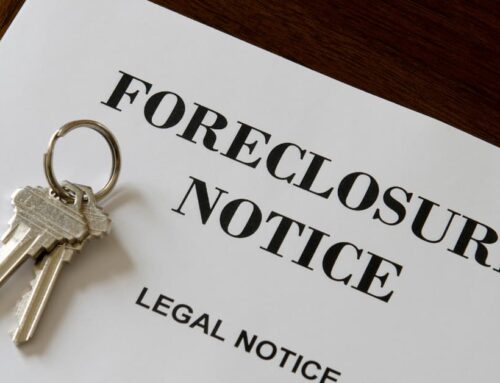Understanding how to put a lien on a property is one of the most powerful legal tools available to creditors, contractors, and service providers seeking payment for debts owed. This mechanism transforms an unsecured debt into a secured claim against real estate, providing significant leverage in collection efforts.
Understanding how to put a lien on a property is crucial for contractors facing unpaid work, landlords with delinquent tenants, lenders protecting investments, and judgment creditors pursuing court awards.
Texas law provides specific procedures for lien claimants, but these requirements demand careful attention to detail and strict adherence to statutory deadlines.
The lien filing process involves complex legal procedures that vary based on debt type, work performed, and specific circumstances. Missteps can result in a complete loss of lien rights, making professional legal guidance from an experienced real estate attorney invaluable for protecting your interests and maximizing recovery chances.
Key Takeaways:
- Liens Secure Debt: Filing a lien turns unpaid debts into secured claims against the property, pressuring owners to pay by blocking sales or refinancing.
- Multiple Lien Types: Texas allows mechanics, judgment, tax, and mortgage liens—each with different rules, rights, and deadlines.
- Strict Deadlines Apply: Missing notice or filing deadlines can void your lien. Timing varies based on role (e.g., contractor vs. subcontractor).
- Eligibility Requires Proof: Only certain parties (e.g., contractors, landlords, creditors) can file liens—and must back claims with solid documentation.
- Legal Help Is Crucial: Texas lien laws are complex. An attorney can help avoid costly errors and ensure your claim is enforceable.
Understanding Property Liens: How to Put a Lien on a Property
A property lien represents a legal claim against real estate that serves as security for an outstanding debt or obligation. When you place a lien on a property, you create a legal encumbrance that prevents the owner from selling or refinancing without addressing your claim.
This powerful collection tool transforms your unsecured debt into a secured interest backed by the value of the real estate.
The fundamental purpose of learning how to put a lien on a property lies in debt security and collection leverage. Once properly filed, your lien becomes part of the public record, alerting potential buyers, lenders, and title companies to your claim.
This public notice often motivates property owners to resolve outstanding debts to clear their title and restore their ability to freely transfer or encumber their property.
Property liens also provide priority protection for your claim. In many cases, properly filed liens receive payment priority over subsequent creditors, ensuring that your debt receives consideration before newer obligations.
This priority system makes understanding how to put a lien on a property essential for protecting your financial interests in competitive collection scenarios.
Common Reasons for Filing Property Liens
Understanding how to put a lien on a property becomes necessary in several common scenarios:
Unpaid Construction and Contractor Work: Contractors and subcontractors frequently utilize property liens when facing unpaid construction bills, renovation costs, or improvement expenses. These mechanic’s liens protect those who have enhanced property value through their labor and materials without receiving full compensation.
Delinquent Rental Payments: Landlords may pursue property liens against tenants who have defaulted on rental agreements, particularly in commercial lease situations with significant unpaid rent. These liens can attach to any real property owned by the debtor, providing security beyond the leased premises.
Court-Awarded Judgments: After obtaining a court judgment for money damages, creditors can convert their judgment into a lien against the debtor’s real property, securing their award and creating pressure for payment satisfaction.
Unpaid Professional Services: Professional service providers, including attorneys, accountants, and consultants, may need to understand how to put a lien on a property when clients fail to pay for services rendered. These liens help protect professional fees and ensure compensation.
4 Types of Property Liens in Texas
1. Mechanic’s Liens
represent the most common type of property lien for contractors, subcontractors, suppliers, and laborers who have improved real property.
Texas law provides specific protections for these claimants, recognizing their contribution to property enhancement and establishing clear procedures for securing payment through lien rights.
2. Judgment Liens
arise from court-awarded money judgments and can attach to any real property owned by the judgment debtor within the county where the judgment is filed. These liens provide a mechanism for converting legal victories into secured claims against real estate assets.
3. Tax Liens
are filed by governmental authorities for unpaid property taxes, income taxes, or other tax obligations. These liens typically receive priority over most other claims and demonstrate the government’s strong interest in tax collection.
4. Mortgage Liens
represent voluntary liens created when property owners pledge their real estate as security for loans. While consensual in nature, these liens establish the template for understanding how secured interests in real property function within the legal system.
The distinction between consensual and non-consensual liens proves crucial for understanding lien priority and enforcement procedures. Consensual liens arise from agreements between parties, while non-consensual liens are imposed by law or court order to protect creditor interests.
Who Can File Property Liens in Texas
Texas law permits various parties to file property liens, but each must establish legal standing and follow specific procedures. Parties eligible to file liens include:
- Contractors and subcontractors who provided labor, materials, or equipment for property improvement
- Lenders and financial institutions securing loan obligations
- Judgment creditors converting court awards into secured claims
- Landlords pursuing unpaid rent, particularly in commercial lease contexts
- Professional service providers (attorneys, consultants) who enhanced property value or legal position
The key requirement for all lien claimants involves demonstrating a legitimate debt relationship and following proper legal procedures.
Simply being owed money does not automatically create lien rights; claimants must establish their legal basis and comply with statutory requirements to perfect their claims.
Pre-Filing Considerations for Property Liens
Before learning how to put a lien on a property, claimants must confirm their eligibility and gather supporting documentation. This preparation phase proves critical for successful lien filing and enforcement, as deficiencies in documentation or legal standing can invalidate entire claims.
Essential Documentation Requirements
Comprehensive documentation requirements include original contracts, work orders, invoices, payment records, correspondence regarding the debt, and proof of property improvement or service provision.
These materials establish the foundation for your lien claim and demonstrate the legitimacy of your debt relationship.
Understanding Texas Filing Deadlines
Texas imposes strict deadlines for lien filing that vary based on claim type and claimant status. General contractors typically face different deadlines than subcontractors, while judgment creditors operate under separate timeframes.
Missing these deadlines can result in a complete loss of lien rights, making early preparation essential.
Statute of Limitations Considerations
Statute of limitations considerations also affect lien filing decisions. While you may have time to file a lien, separate limitation periods govern debt collection lawsuits and lien enforcement actions. Understanding these interconnected deadlines helps develop comprehensive collection strategies.
Texas-Specific Requirements for Property Liens
Texas Property Code Chapter 53 establishes detailed requirements for how to put a lien on a property within the state. These requirements include specific notice procedures, documentation standards, and filing deadlines that vary based on the type of claim and the claimant’s relationship to the property.
Notice of Intent to Lien Requirements
Notice of Intent to Lien requirements often precede actual lien filing, providing property owners with advance warning and the opportunity to resolve disputes before liens become public record.
These notices must contain specific information and be delivered according to statutory requirements to preserve lien rights.
Filing Procedures and Documentation
Filing procedures require submission of lien affidavits to the county clerk’s office where the property is located. These documents must contain:
- Precise property descriptions using legal descriptions from county records
- Detailed debt information, including amounts owed and basis for the claim
- Sworn statements regarding the legitimacy of the debt
- Specific dates of work performance or service provision
- Proper identification of all parties involved in the transaction
Errors in these filings can compromise lien validity and enforcement prospects.
Critical Filing Deadlines
Deadlines for mechanic’s liens typically range from 15 days to six months after work completion, depending on the claimant’s role and contract type. Original contractors face different deadlines than subcontractors, while suppliers may have separate timeframes for establishing lien rights.
Step-by-Step Process: How to Put a Lien on a Property
Learning how to put a lien on a property requires following these essential steps in proper order:
1. Send Required Preliminary Notices
The first step involves sending required preliminary notices. For mechanic’s liens, this often includes Notice to Owner letters that must be delivered within specific timeframes after work commencement. These notices preserve your right to file liens if payment disputes arise later.
2. Prepare the Lien Document
Preparing the lien document requires careful attention to statutory requirements and precise property identification.
The lien affidavit must include the property’s legal description, the amount owed, the basis for the claim, and sworn statements regarding the debt’s validity. Professional preparation helps ensure compliance with technical requirements.
3. File the Lien with the County Clerk’s Office
Filing the lien with the appropriate county clerk’s office creates the public record of your claim. This step transforms your private debt into a public encumbrance that affects the property’s title and marketability. Filing fees typically range from $35 to $150, depending on the county and document complexity.
4. Serve a Copy on the Property Owner
Serving a copy of the filed lien on the property owner completes the notice requirements and officially informs them of your claim. This service must occur within specific timeframes and follow statutory procedures to maintain lien validity and enforcement rights.
5. Pay Filing Fees and Service Costs
Payment of applicable filing fees and service costs represents the final administrative step in the lien filing process. These costs are typically recoverable as part of your claim if you ultimately prevail in collection efforts.
What Happens After Filing a Property Lien
Once filed, your lien becomes part of the permanent public record, creating a cloud on the property’s title that appears in title searches and affects the owner’s ability to sell or refinance. This public notice often motivates property owners to resolve outstanding debts.
The lien’s presence may prevent property transfers or refinancing until your claim is resolved through payment, legal challenge, or negotiated settlement. This restriction creates significant pressure for debt resolution and provides substantial leverage in collection negotiations.
For mechanic’s liens, Texas law requires filing a foreclosure lawsuit within one year to maintain enforcement rights. Failure to meet this deadline can result in lien expiration and loss of your secured claim status.
Judgment liens typically remain effective for ten years and can be renewed, providing long-term security for your claim and capturing future property appreciation or refinancing proceeds.
Legal and Financial Implications of Property Liens
Filing invalid or fraudulent liens can expose claimants to significant legal liability, including damages for title clouding, attorney fees, and potential criminal penalties. Understanding how to put a lien on a property includes recognizing when a lien filing is inappropriate or legally unsupported.
Valid liens create substantial financial pressure on property owners by affecting their credit ratings and limiting their ability to use their property as collateral for other transactions. This pressure often motivates quick resolution of underlying debt disputes.
Liens provide strong negotiating leverage in settlement discussions and debt collection efforts. Property owners facing lien claims often prefer negotiated resolutions to avoid the complications and expenses associated with formal lien challenges or foreclosure proceedings.
The public nature of lien records can also affect property owners’ business relationships and reputation, particularly for commercial property owners who rely on clean titles for ongoing business operations.
Alternatives to Filing Property Liens
Before learning how to put a lien on a property, consider these alternative debt collection methods:
Formal Demand Letters: Sending formal demand letters that clearly state your claim and provide reasonable deadlines for payment often resolves disputes without lien filing. These letters preserve business relationships while demonstrating your serious intent to collect.
Small Claims Court: This alternative forum works well for pursuing modest debts without the complexity and expense of lien procedures. Small claims court is particularly effective for smaller contractors and service providers seeking efficient debt resolution.
Professional Debt Collection Services: Collection agencies offer expertise in debt recovery and may achieve results without the legal complexities of lien filing. These services prove valuable when dealing with:
- Multiple small debts across different clients
- Geographically distant debtors
- Situations requiring persistent follow-up
- Cases where maintaining client relationships isn’t critical
Mediation and Arbitration: These structured negotiation forums can resolve disputes while avoiding the adversarial nature of lien proceedings. Alternative dispute resolution often preserves business relationships while achieving satisfactory debt resolution.
When to Consult an Attorney About Property Liens
Large debts or complex lien situations warrant professional legal assistance to ensure proper procedure compliance and maximize recovery prospects. Attorney involvement becomes essential when dealing with contested claims, multiple parties, or significant financial exposure.
Property owners who challenge lien validity or dispute underlying debts create legal complexity that requires professional handling. These disputes often involve technical legal issues that can affect lien enforcement and collection success.
Unfamiliarity with Texas lien laws presents substantial risks for claimants attempting to navigate the process independently. Professional guidance helps avoid costly mistakes that can result in a complete loss of lien rights and collection opportunities.
Time-sensitive deadlines and complex notice requirements make attorney assistance valuable for preserving all available remedies and ensuring compliance with statutory mandates.
Risks and Potential Retaliation from Property Lien Filing
Property owners may respond to lien filings with defamation claims or countersuits challenging the validity of their debt or the appropriateness of lien filing. These defensive actions can create additional legal expenses and complicate collection efforts.
Business relationships and professional reputation may suffer when lien filing becomes necessary, particularly in smaller communities where word of collection actions spreads quickly among potential clients and business partners.
Criminal penalties may apply for knowingly filing fraudulent liens, making it essential to ensure the legitimacy of your claim and compliance with all legal requirements before filing.
The adversarial nature of lien proceedings can escalate disputes beyond their original scope, potentially creating ongoing legal battles that consume resources and attention beyond the value of the original debt.
FAQs About How to Put a Lien on a Property
How do you put a lien on a property without a written contract?
Even without a formal contract, Texas allows liens supported by documentation like invoices, work orders, emails, or proof of property improvements. While it’s harder to prove, lien rights can still be enforced if proper notice is given and a clear debt relationship is shown. Legal help is often essential in these cases.
How long does a property lien stay on property in Texas?
It depends on the lien type. Judgment liens last ten years and can be renewed. Mechanic’s liens expire if not enforced within a year. Tax liens remain until paid or foreclosed, and mortgage liens stay until the loan is paid and released.
Can property owners remove liens without paying the debt?
Owners can challenge liens in court if there are errors or fraud. Valid liens usually require payment or settlement to be removed. Posting a bond may allow temporary release while disputing the debt.
What are the costs of putting a lien on property in Texas?
Filing costs range from $35–$150. Additional expenses include mail, service fees, and legal help—which can cost hundreds to thousands but may be recovered if the debt is collected.
Securing Your Rights: Professional Assistance for Property Lien Filing
Understanding how to put a lien on a property is critical for protecting your financial interests and ensuring payment for services rendered. The process demands strict compliance with Texas statutory requirements, careful attention to deadlines, and thorough documentation.
The complexity of lien law makes professional legal guidance invaluable for maximizing recovery while minimizing risks. An experienced attorney can navigate Texas Property Code Chapter 53 requirements and develop comprehensive collection strategies.
Kelly Legal Group provides comprehensive assistance for contractors, creditors, and service providers seeking to protect their interests through proper lien filing procedures. Our experienced attorneys guide you through every step, from eligibility assessment to final debt collection.
Don’t risk losing your lien rights through procedural mistakes or missed deadlines. Contact Kelly Legal Group today to request a consultation. We will protect your right to payment and help you navigate Texas property lien law with confidence!






